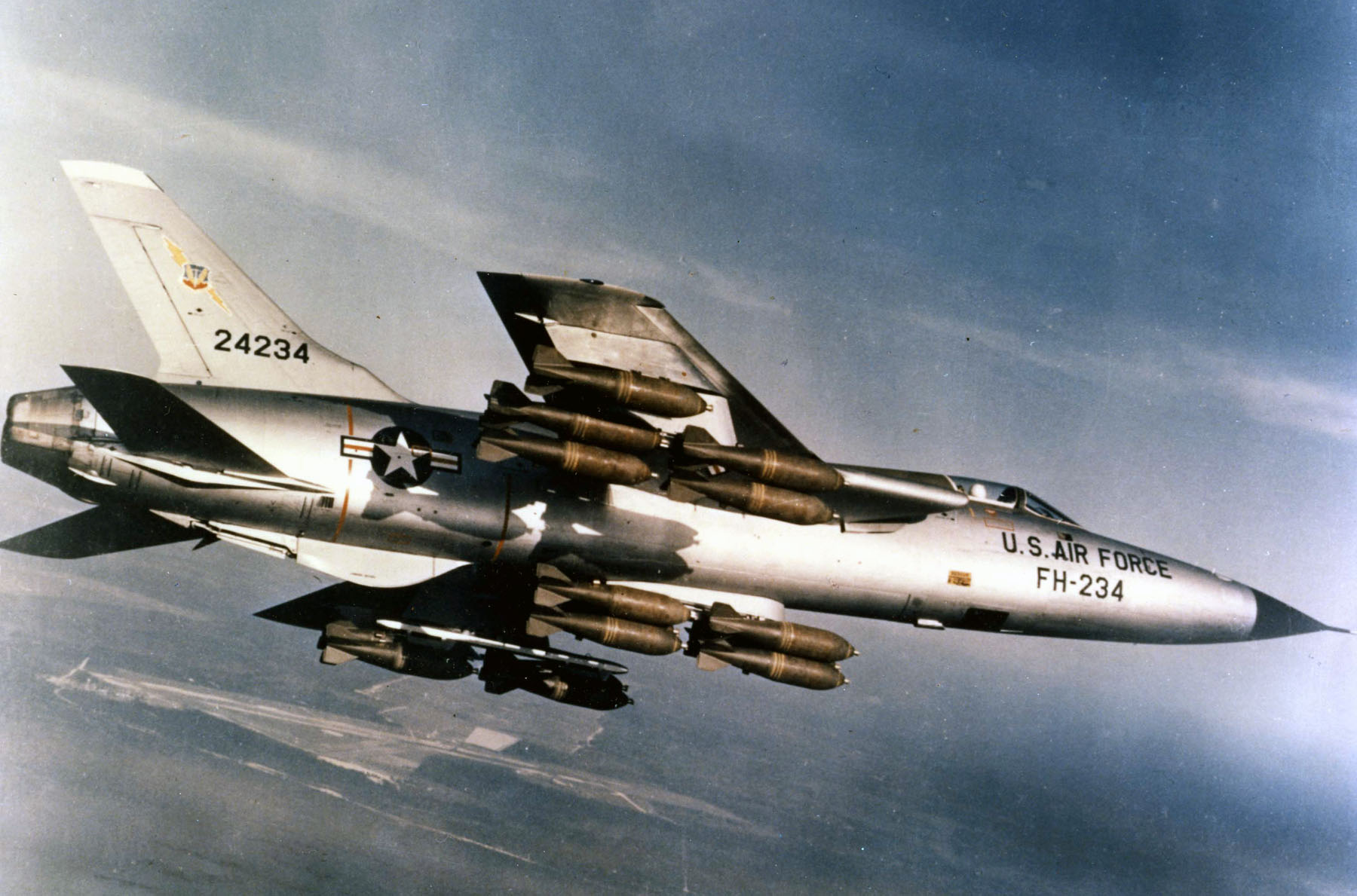“The F-105 Thunderchief was the largest single-seat, single-engine combat aircraft in history.”
Discovery Channel "Wings" F-105 Thunderchief
Design of the F-105 Thunderchief began in the early 1950s as an internal project at Republic headed by Kartveli. Intended to be a replacement for the F-84 Thunderjet, the F-105 was created as a supersonic, low-altitude penetrator capable of delivering a nuclear weapon to a target deep within the Soviet Union. The design team produced an aircraft centered on a large engine and able to achieve high speeds. As the F-105 was meant to be a penetrator, maneuverability was sacrificed for speed and low-altitude performance.
Intrigued by Republic's design, the US Air Force placed an initial order for 199 F-105s in September 1952, but with the Korean War winding down reduced it to 46 six months later. On October 22, 1955, the first YF-105A prototype flew, powered by a Pratt & Whitney J57-P-25 engine. Test flights with the YF-105A soon revealed that the aircraft was underpowered and suffered from problems with transonic drag. To counter these issues Republic replaced the engine with the more powerful Pratt & Whitney J75, altered the arrangement of the air intakes, and redesigned the F-105's fuselage.
The redesigned aircraft, dubbed the F-105B, proved able to achieve speeds of Mach 2.15. Also included were improvements to its electronics including the MA-8 fire control system, a K19 gun sight, and an AN/APG-31 ranging radar. With the alterations complete, the YF-105B first took to the sky on May 26, 1956. The largest single-engine fighter built for the US Air Force, the production model F-105B possessed an internal bomb bay and five external weapons pylons. The US Air Force planned to purchase 1,500 F-105s, however this order was reduced to 833 by Secretary of Defense Robert McNamara.


